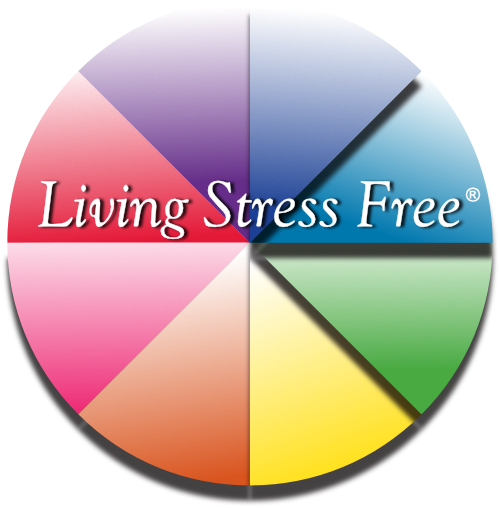Did you know your glands, organs, tissues, and cells are storage places for emotions and feelings?
According to the scientific research of Dr. Candace Pert, a neuropharmacologist who worked at the NIH and Georgetown University Medical Center, this is exactly what happens to our emotions. Candace stated: “Your body is your subconscious mind. Our physical body can be changed by the emotions we experience.”[1].
Dr. Pert explains: “A feeling sparked in our mind-or body-will translate as a peptide being released somewhere. [Organs, tissues, skin, muscle and endocrine glands], they all have peptide receptors on them and can access and store emotional information. This means the emotional memory is stored in many places in the body, not just or even primarily, in the brain… Let the emotions bubble up. Let the chips fall where they may… By simply acknowledging emotions, they are expressed. In being expressed, emotions can be released, even old emotions stored in body memory.”
Recently, I worked with three different clients, with different responses to their challenging emotions. The first, and most distressing, was a client who was feeling worthless, helpless, overwhelmed, and fearful. She did not know how to identify these emotions, so her mind distorted the reasons for these feelings. She experienced dark thoughts that were very violent and out of character with her personality. In processing her current life issues in therapy, it became clear that her mind took the emotions and created something to match the intensity. These frightful thoughts had no truth to them whatsoever. They were created by the mind so the mind felt justified to have the emotions. The feelings were real and true, not the thoughts.

The second client I worked with was unable to identify what is truly wrong in his life; his repressed emotions turned into physical ailments that doctors cannot find a cause for. He keeps going to different physicians to find out why he has intense physical pain but becomes frustrated when they state they cannot find anything wrong. He looks for medications to experience temporary relief but gets side effects from the medication. His emotional issues are not being dealt with.
The third example was a client who found her own solution. She shared with me that she felt a lot of anger but could not define it or put it into words to journal about it. She took scraps of newspaper and cardboard pieces and taped it all together to create a paper sculpture. She then took red paint, signifying her anger, and painted the paper sculpture with dramatic strokes. She expressed her feelings through art instead of trying to put it into words. She commented how the process of creating this was cathartic and she no longer was angry.
These three examples show that feelings need to be defined, expressed and released. For one client, it worked very well; for the others, the distressing results of not releasing the emotions were very clear. One thing is for sure: repressing and stuffing strong emotions is not healthy. If you feel excessive worry, frustration about being criticized or ignored, unsupported by others, unsafe in your environment or in conflict over a significant issue, these feelings need to be identified, acknowledged and released.
Three Steps to Emotional Health
- Identify feelings without judgment: Often people screen out what is bothering them because of feeling they shouldn’t feel that way, they don’t have a right to feel that way, or they have guilty feelings around the issue. Judgment interferes with seeing a clear picture of what is going on.
- Acknowledge and sit with feelings: Why do we avoid or distract ourselves from negative feelings? Just like the weather causes sunny, beautiful days and rainy, miserable days, so do we with our emotions. Allow all feelings to exist. By discounting and escaping from an emotion because it is uncomfortable, we increase the likelihood it will hide inside the body and emerge in another form later in life.
- Express and release feelings: Even if you cannot understand the reason for your emotions, you can still release them. Here are a few suggestions for how to express your feelings in a healthy way, independent of others. Many times there is nobody available to talk to or you may feel uncomfortable opening up. It is important to have ways to release emotions autonomously.
- Write about how you feel. Don’t screen anything out. Journal the rage, fear, despair, dissatisfaction, and any emotional reaction fully. Getting it out on paper takes it out of your body. If you don’t relate to writing, you can audio record your feelings.
- Create something using art or music. Express the emotion non-verbally by painting it, making a sculpture, carving out of wood, playing it on an instrument, or scrapbooking. Putting the feeling into action with a creative result is a cathartic experience.
- Release feelings with movement. Emotions rest in the body, so moving the body helps release them. Exercise with exertion by running or doing calisthenics, vacuum the rugs, scrub the bathtub, mow the lawn, knead dough, shave carrots, or just shake different body parts.
- Listen to music that has the same emotion you are feeling. Hearing the vibrations that match how you feel allows for an experience of validation and release.
- Use your voice to express how you feel. Go somewhere by yourself and let it out. You can say how you feel, swear, yell, vent, and even talk to God about it. If you have no privacy at home, go in the car. Just do this alone so you don’t take your feelings out on someone else by mistake.

A healthy, happy, fulfilling life allows for your thoughts and feelings to be acknowledged, expressed, and released. Disallowing or negating emotions would be akin to trying to stop a thunderstorm from coming, or ignoring the snowstorm that just obliterated your car. Releasing feelings prevents you from holding onto negative mind states or internalizing toxic feelings that can affect your health. Try these suggestions for letting emotions flow out of you and begin to experience a new level of emotional health.
[1] “Molecules of Emotion: The Science Behind Mind-Body Medicine”, Candace Pert.
For more information on Emotional Health contact Marilyn or Lou Guadagnino at lsf@livingstressfree.org to discuss the benefits of LSF Mindfulness Meditation, Counseling, or Stress Coaching to learn how to experience more happiness, health, and fulfillment in life.
Also, stay tuned: Marilyn’s new book “Living Stress Free: How to Lower Your Stress and Live a Happier, Healthier Life” is coming out soon! Twenty chapters of insights, case studies, personal sharing, and takeaways to live a stress-free life. A powerful self-help resource, this book is practical, easy to read and transformative.

